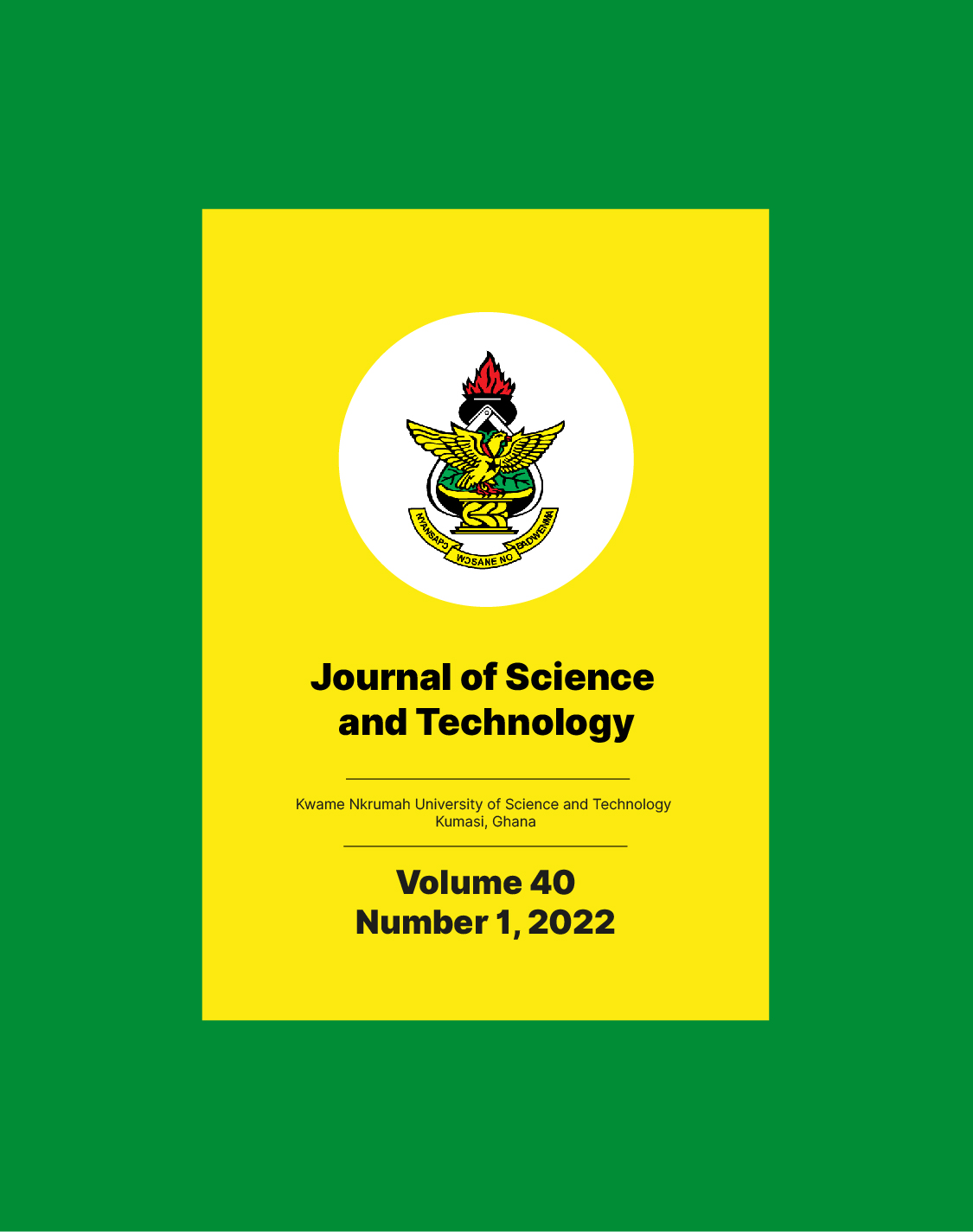Main Article Content
A GEOSTATISTICAL APPROACH TO OPTIMAL DRILLING AND SAMPLING DESIGN: A CASE STUDY OF THE OBUASI GOLD DEPOSIT IN SOUTHERN GHANA
Abstract
This paper demonstrates the application of geostatistical techniques to the design of optimum drilling/sampling density, to an epithermal mixed vein- and disseminated sulphide type gold deposit. The Obuasi Mine is situated within the Ashanti gold belt of Ghana. The mine has past production and current reserves exceeding about 1,200 tonnes (t) of gold. The deposit is a typical shear zone type, characterised by non-uniform sulphide mineralisation distribution and boudinage auriferous quartz reefs having sharp boundaries. The main objectives of this study were; to determine the distribution of gold grades, and to use geostatistical approach to determine the optimum drilling and sampling intervals for the underground mine. The data for the study come from Block 1, Kwesi Mensah Shaft of the mine. It comprises of two data sets, diamond drill core and channel samples from cross-cuts. 507 drill hole cores were sampled at intervals of between 1.0 m, and 149 crosscuts, from which a total of 114488 channel samples were obtained and assayed by Atomic Absorption Spectroscopy (AAS) method for gold (Au). Statistical analysis showed that gold grade data had multiple-population characteristics. To analyse for spatial structure of gold mineralisation, 3D semi-variograms were computed in the 3 principal directions. Variability of the Au grades within the deposit were revealed, and nugget effect, C0 defined as 3.7 (g/t)2 and ranges (a's) ranged from 3.7, 16.1 to 27.5 in the across-strike, along strike, and down-dip directions, respectively. Sidewall channel sampling interval of 1 to 1.5 m across strike (used in crosscut and reef drives backs), and 30 m drill hole spacing for the down-dip section are adequate. Drill hole spacing in sections perpendicular to the strike of the deposit should be between 30 to 50 m, depending on the size, complexity of mineralization and structure of the orebody.




